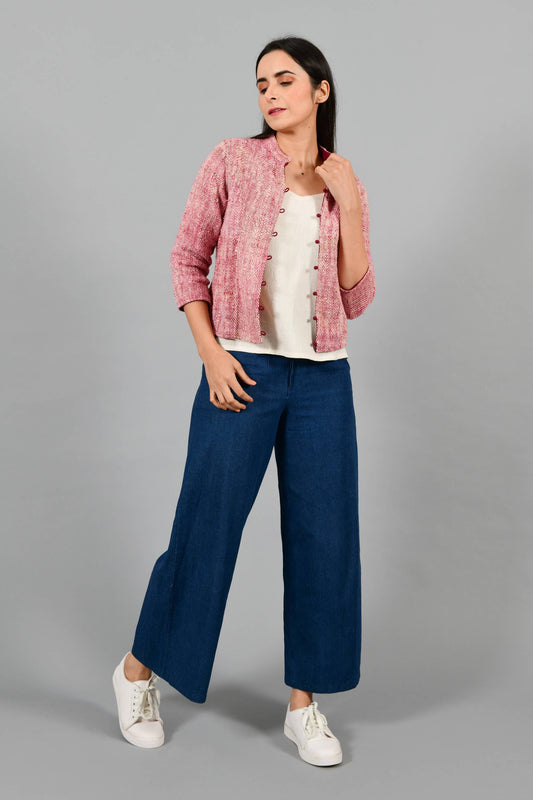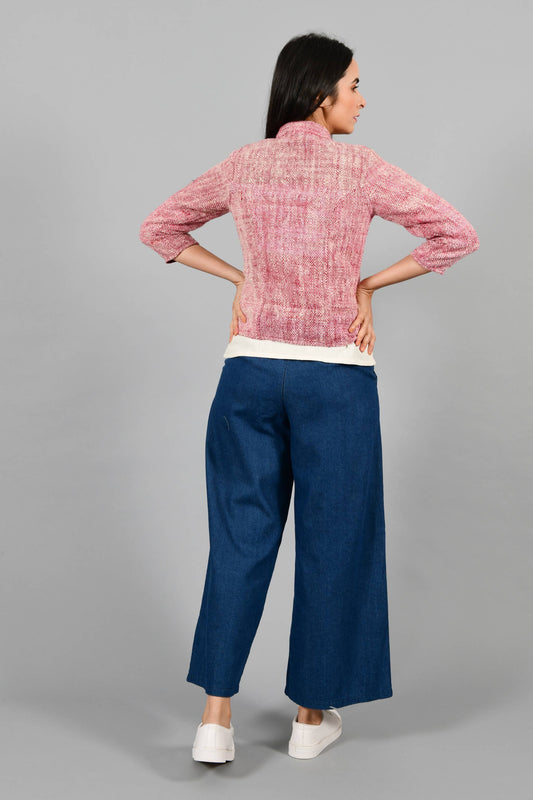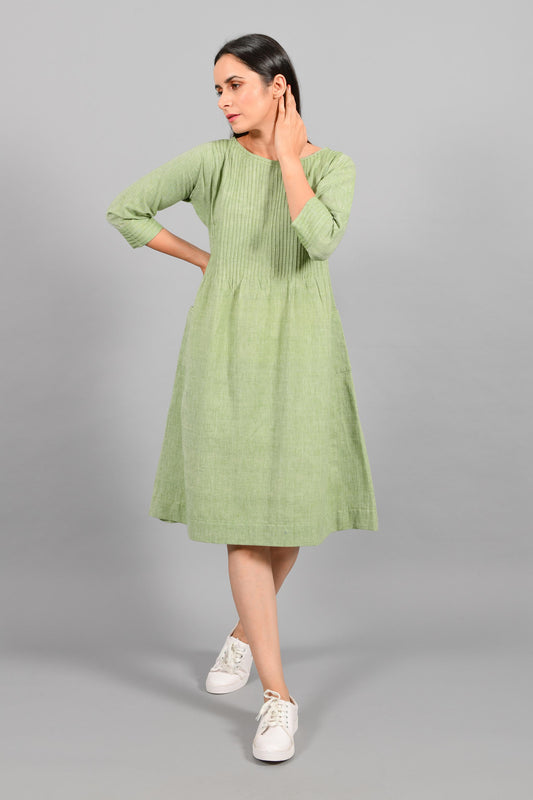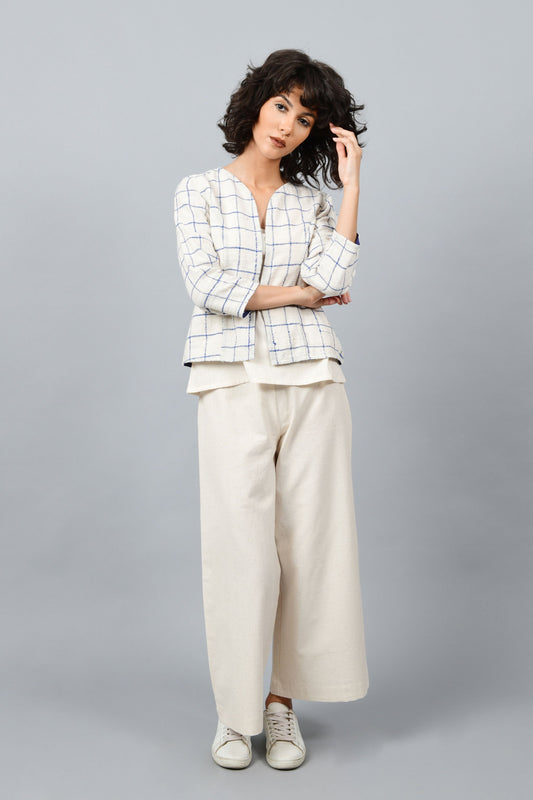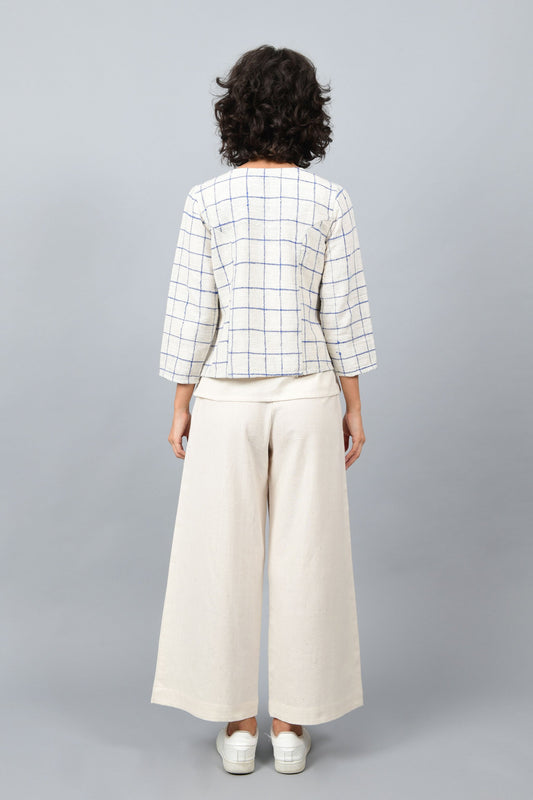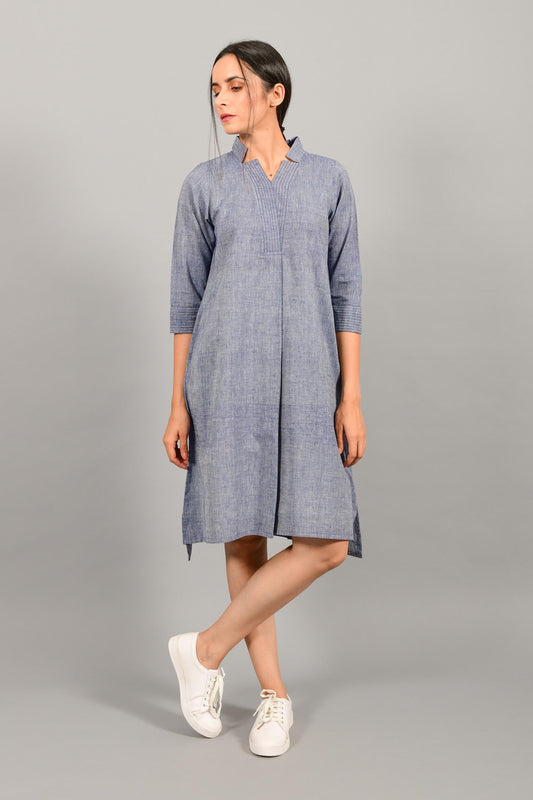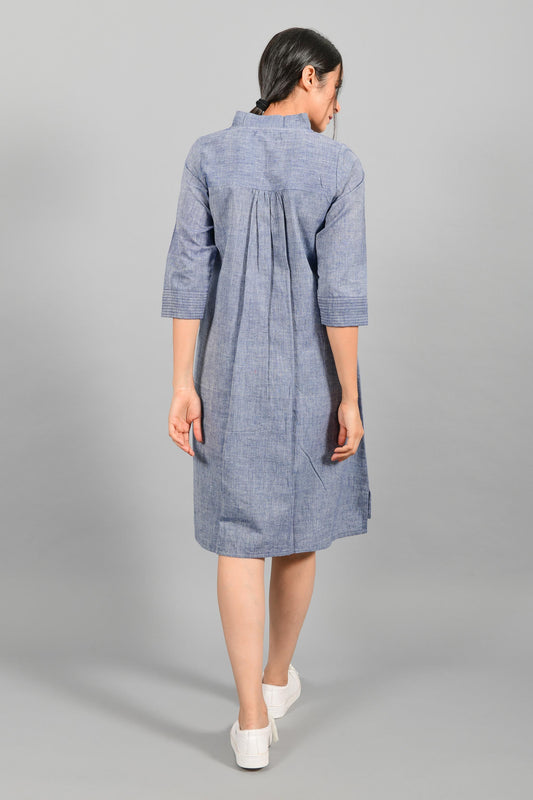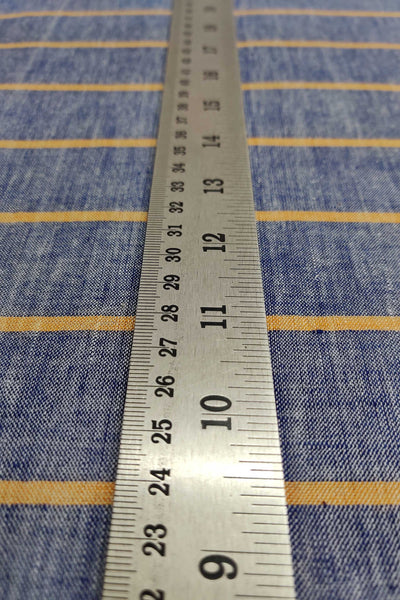
On material terms it tells you that it is 100% pure cotton. Visually it will also tell you that it was dyed in a particular colour, chemical analysis will show that it was dyed using Azo-Free dyes. A single yarn pulled out of this tiny piece will also tell you that it is handspun with single ply twist that is only possible on an Ambar Charkha. If you put on the Sherlock hat and observe the fabric through a looking glass, you'll see 24 warp threads and 19 weft threads. Pick up a calculator and a measuring tape and we'll tell you that the width of this fabric is 48 inches (roughly 123 cms) and then you can calculate that in a meter length of this fabric which was made on a floor loom there are 2,928 warp yarns and 1,900 weft yarns.
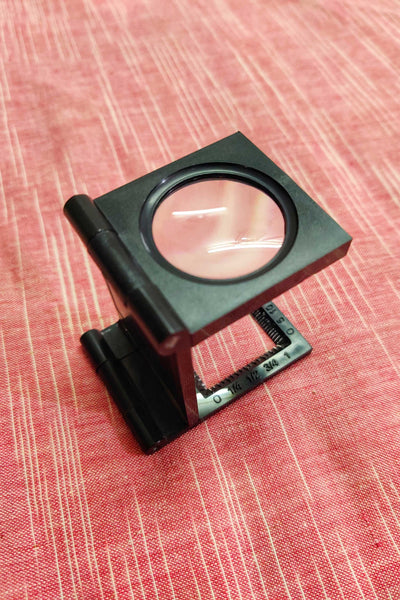
Should we continue? We won't take much of your time. On an average a basic kurta or a dress uses a length of 2.2 metres of it. Shouldn't we then continue further with the maths? A bit of scratching of head and tapping the keys on a calculator will tell you that you require same number of warp threads (2928) but the length is now 220 cms. Also, you will learn that you will require 4180 weft yarns to make enough fabric for a dress. In totality, you require 7108 strands of single ply twisted cotton yarn of varying lengths to create a Cotton Rack dress/kurta. Or if you put it in terms of length, a total of 6,44,160 cms of warp yarn and 5,09,960 cms of weft yarn giving a total of 11,54,120 cms of yarn or 11.54 kms or 7.17 miles of yarn (only) for a dress. Let's repeat it again 11.54 kms of yarn is used to make a Cotton Rack dress or a kurta on an average. Is the number unbelievable or overwhelming? Did we stress enough that all that yarn is handspun on Ambar Charkha? Human work hours that go into cultivating, processing, spinning, weaving, dyeing, creative thinking, tailoring, finishing, selling and writing of tiny writeups such as this one is yet to be factored in, since, that is not told by that 1cm by 1cm of the fabric
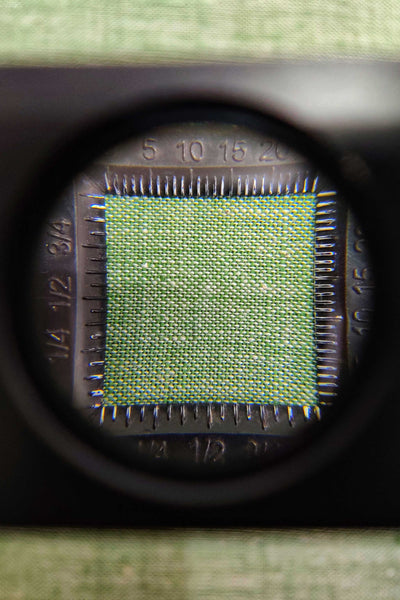
This is just us with one kurta or dress, elaborating on one element. Imagine the rest of Indian handicraft industry and the work and resources that goes into creating even a centimetre of a product. That also becomes the reason why Indian handicrafts should be seen as luxury and not a commodity. If this gave you some perspective then let's come together and create a respectable environment about our crafts and sensitise our friends and family about value of being handmade in a way that they too start loving it as much as you do.
The story wasnt possible without our fabrics that make our womenwear. View our collection here.

